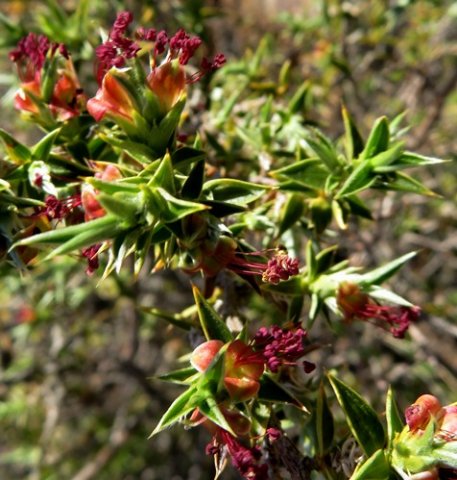Cliffortia

Cliffortia is a genus of erect or procumbent shrublets, shrubs or small trees in the Rosaceae or rose family.
The wood of the lower stems becomes very hard in some species, in the past used to make pipe stems. This gave the plants the Afrikaans name of pypsteelbos (pipe stem bush). Some Vitex species are known as pypsteelbome (pipe stem trees).
The alternate or fascicled leaves are sessile or short-stalked, appearing simple or three-foliolate. The leaves are often small and hard, their margins entire, toothed or lobed and usually with triangular, pointed stipules sheathing the stem.
The flowers grow solitary, scattered or clustered from leaf axils, the sexes in separate flowers or dioecious, on separate plants. There are no petals, but three or four modified leaves are petaloid sepals in male flowers and form variously shaped tubes in female ones. Male flowers bear 3 to 50 stamens and the inconspicuous female flowers have 1 to 3 feathery styles, often reddish on free carpels. The fruit is a single achene, or up to three of them develop in the persistent receptacle.
There are about 120 Cliffortia species, all occurring in southern Africa, mostly in winter rainfall fynbos of the Western Cape while few extend into tropical Africa. Although seldom browsed, the plants are not poisonous.
The plant in picture is Cliffortia ruscifolia var. ruscifolia (Leistner, (Ed.), 2000; Vlok and Schutte-Vlok, 2015; Manning, 2007).

